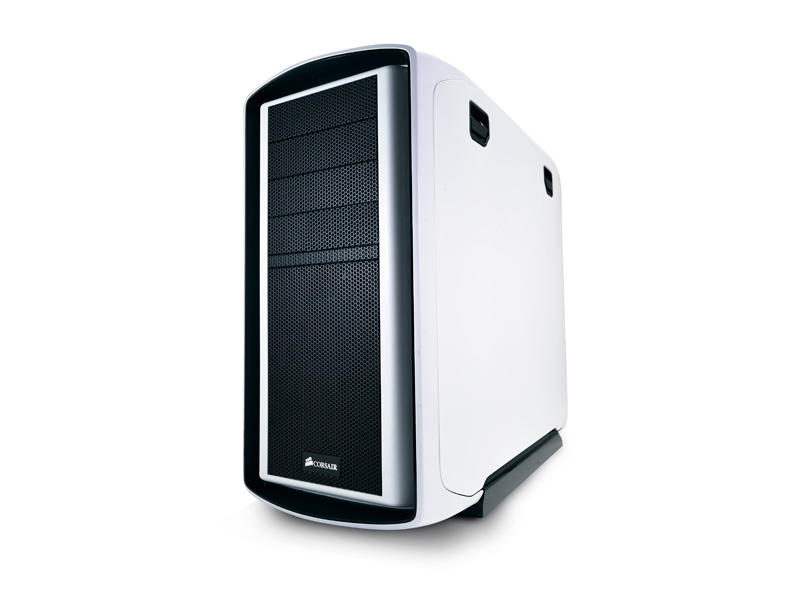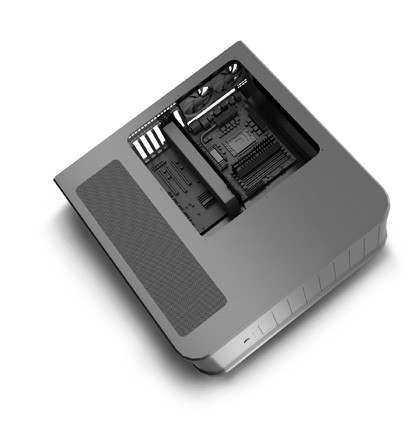
System builders are great and everything, but unless you emit static electricity or are terminally lazy, you should be thinking about building your own PC.
Why? Because not only do you get the satisfaction of having crafted your machine from the ground up, growing and harvesting each component from the soil… or something like that.
You also get full control over what goes in the chassis. And what the case will look like. System builders do a great job of delivering sensible packages of components at attractive price points, but building your own rig gives you full control. All the parts you need, none that you don't. And no extra expense to you.
And that level of control's important. It's what being a PC enthusiast is all about. It's what elevates us above the hunched simian shoulders of console gamers.
Everyone uses their PC in a different way; sure we all have a web browser, a media player and Sims 3: Toilets 'n' stuff installed, but beyond that our hard drives and habits are as varied as grains of sand on a beach. Choosing each component individually allows you to make a machine that will suit your exact needs.
The rig for you
Whether you're a thifty technophile, an avid gamer, a designer, multimedia editor or music producer we'll guide you through picking the best parts for your needs - and your budget.
We've even made a handy step-by-step for you. Pretty invaluable if you've never built a rig from scratch before, and just as useful if you have - even experienced rig builders are odds on to have spent a few frustrated afternoons scratching their head and wondering which flipping connection they haven't made.
Get daily insight, inspiration and deals in your inbox
Sign up for breaking news, reviews, opinion, top tech deals, and more.
Our step-by-step is the antidote to such troubled times. Over the next eight pages we'll show you what we think are the best system components for budget builders, gamers and those in need of a seriously powerful workstation, why they're worth your money and how to build them into a PC.
But like we said, every PC user is unique - that's why we've also given you some options and suggested alternatives. Read on to start building.
How to build a cheap PC
Shopping list
Motherboard: Asus F1A75-M - £81
Processor: AMD A8-3850 - £105
RAM: Corsair 4GB 1,600MHz - £28
Graphics: XFX Radeon HD 6670 - £60
Storage: Seagate 750GB - £36
Optical: LiteOn DVD RW - £14
PSU: Corsair 430W - £35
Chassis: Asus TM-B11 mATX Tower - £23
Total: £382

Putting together the perfect budget machine is a tricky business in the current market. With money being tight it's more important than ever to make sure your components are balanced properly so you're not wasting money on unnecessary bottlenecks. With any PC build you've got one of two ways to go right from the off. Do you want an Intel or an AMD-based machine?
At the top-end there really is currently no choice whatsoever: it's Intel all the way. AMD's Bulldozer might put a little dampener on things for Intel, but with the Sandy Bridge Extreme processors and X79 chipset waiting to trump AMD's release the status quo may well remain.
But at the budget-end things are as unequivocally AMD as the high-end is Intel. On the Intel side your cheapest serious options are the dual-core Sandy Bridge chips, and although offering hyperthreading they're weak ol' CPUs.
In the balance
AMD has a wealth of options to choose from though. But to keep a balance of price and performance we're going to be looking squarely at the new desktop Llano hardware it's just launched.
If you're just looking for a budget machine that's only going to be used for gaming occasionally you can make do without a discrete graphics card in this Llano build. The integrated graphics of the top-end Llano APU are at least three times faster than that of the fastest Sandy Bridge iGPU. With a discrete card you're getting the most out of your build.
Because of the Llano chip's Dual Graphics function you can pair a mid-range AMD GPU with the graphics side of the APU and give your card a healthy boost. At the very least we're talking about a 33 per cent speed boost over just the card on its own.
Trump cards
Elsewhere we've trumped the budget build in the Rig Builder pages and boosted the storage and memory options. Llano benefits extremely well, especially in Dual Graphics mode, from speedy memory modules. Dropping in 4GB of 1,600MHz DDR3 should do some serious good.
There's also a 750GB HDD for only an extra £7 on top of the 320GB drive in that build. The smallish, 430W PSU is all that's needed due to the power-saving prowess of the Llano chipset, and the HD 6670 graphics card doesn't even need a separate PCI-e power connector.
The mATX Asus motherboard is based on the same technology as the F1A75-V Pro and that board enabled us to hit an impressive 3.7GHz with this 2.9GHz rated chip. And you should be able to get close with this board too.
This is a little machine, quite capable of gaming on a full HD 1080p screen and would be a great pairing with an old 1,650 x 1,080 panel. Hitting over 30fps in DiRT 3 and 24fps in Just Cause 2 at 4x AA on the highest settings at 1,920 x 1,080.
Striking the balance
XFX Radeon HD 6670
This budget rig is all about balance and when the HD 6670 is thrown into the mix with a Llano APU, the Dual Graphics function makes it far more of a real gaming option. Expect a performance boost of 33 per cent, at the very least, over what the card can manage on its own.
You can spend a little more on faster GPUs, but it needs to be AMD to work with the APU as Nvidia cards won't benefit at all. That said it's not worth looking at much higher-end cards, as you may as well pick up a standard AMD CPU without onboard graphics.
AMD A8 3850
The new desktop Llano APU is a great choice for the budget machine. As we've said you can make do without a discrete GPU if your gaming needs aren't particularly hi-res or 3D demanding, and if they are you can make do with a fairly middling card thanks to the APU's Dual Graphics functionality.
The CPU component of the chip is quite good too, coming in full quad-core trim but without the Phenom II's Level 3 cache. Still, it's not a bad overclocking chip and knocks the equivalent Intel Core i3 chip out of the running.
Corsair 4GB 1,600MHZ DDR3
Because of the way the Llano APU shares the system RAM between its CPU and GPU it's very important to make sure your RAM matches up and supports the chip.
The difference in actual gaming frame rates between the memory running at 1,333MHz and 1,600MHz is surprisingly big; in some cases making the difference between jerky and smooth gaming. This is especially true when you factor in the Dual Graphics technology as the RAM then becomes seriously taxed, especially when you're trying to output to high-resolution monitors.

You can see from the Cinebench score it's still a worthy CPU, especially compared to the 2.96 score the equivalent Sandy Bridge CPU manages. In gaming too it hits double figures in Heaven and over 30fps in DiRT 3 is nothing to be sniffed at.
CPU rendering performance
Cinebench R11.5: Index: Higher is better
Budget rig: 3.42
DirectX 11 tesselation performance
Heaven 2.5: Frames per second: Higher is better
Budget rig: 13.4
DirectX 11 gaming performance
DiRT 3: Frames per second: Higher is better
Budget rig: 31